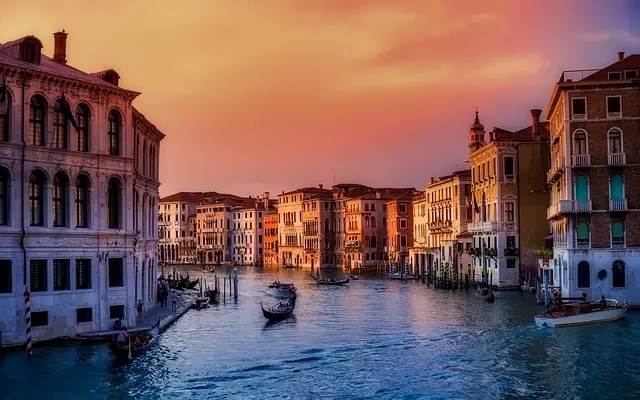
Piazza San Marco
In Venice, Piazza San Marco is the only square called "Piazza", the rest of the squares are called "Campi" regardless of size. Piazza San Marco is unique among European city squares, it is located in the center of the city, but it is not as noisy as other squares, thanks to the quiet water traffic of Venice. A landmark of Venice, Piazza San Marco is especially popular with tourists, photographers and pigeons. In the 19th century, the French Emperor Napoleon praised it as "the most beautiful living room in Europe". Built to commemorate the Twelve Saints and to house the trophies, the square is surrounded by beautiful Renaissance buildings, including the Ducal Palace, St. Mark's Basilica, St. Mark's Bell Tower, the old and new administrative buildings, and the Napoleonic Wing, which connects the two buildings.
Saint Mark's Basilica
The Basilica di San Marco is the resting place of St. Mark, the patron saint of Venice. It was the largest church in medieval Europe, a classic of Venetian architecture, and a treasure trove of rich works of art. The church architecture follows the Byzantine style, with a Greek cross-shaped shape and five hemispherical domes. Since then, the church has undergone several additions and has become a comprehensive art masterpiece integrating Byzantine, Gothic, Islamic and Renaissance genres. The church is best known for its gold-decorated mosaic façade, as are the gold altarpieces and mosaics inside. Under the sunlight, the whole golden splendor of the church is very dazzling, so it is also called the "Golden Cathedral".
Ducal Palace
The Palazzo Ducale, once the residence of the Doge of Venice and the seat of government offices and courts, was built in 814 after several fires, leaving behind a Gothic building built in the 15th century. The interior decoration of the Doge's Palace is mainly oil paintings and murals, among which the "Kingdom of Heaven" made by Toretto in the Grand Councillor's Conference Room on the second floor is known as the world's largest oil painting, with a total of 7 meters × 22 meters. The Doge's Palace also has a variety of weapons on display from the Middle Ages to modern times, and the "Bridge of Sighs" can be reached by walking down the stairs from here.
Saint Mark's Tower
Towering over Piazza San Marco, the Bell Tower of San Marco is the tallest building in Venice. Built at the end of the 15th century, the 98.6-metre-high bell tower made of red brick is both the ordinate of the city of Venice and the center of gravity of the spatial composition of the Piazza complex. From the top, you can enjoy panoramic views of Venice and the lagoon, and even the beautiful Alps.
Bridge of Sighs Ponte di Sospiri
The Pont la la Sigh is one of the many bridges in Venice built in the 16th century, completed in 1600, in the early Baroque style, with closed arches made of limestone, in the shape of houses, covered by upper domes, tightly closed, with only two small windows on the stone beams facing the canal side. The Bridge of Sighs, which spans the Rio di Palazzo and connects Venice with the interrogation chambers of the Ducal Palace and the old prison, was designed by Antoni Contino, whose uncle Antonio da Ponte was the designer of the Rialto Bridge.
Church of Our Lady of the Anthège
The Chiesa di Santa Maria della Salute is a masterpiece of Venetian Baroque architecture. In 1630, when the Black Death was raging, the republican government decided to build this church dedicated to the Virgin Mary, designed by the famous architect Bardassare Longner, and officially completed in 1687. In the sacristy facing the main altar, there are frescoes depicting Old Testament stories such as David and Goliath, a canopy painting by Titian, and Tindotto's The Wedding of Cana.
Conclusion
After two days of sightseeing, I believe you will definitely appreciate the beauty of Venice.
